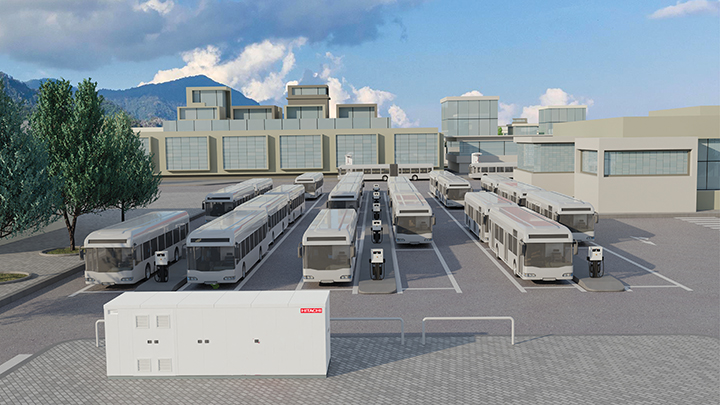
To effectively combat climate change, we need to reduce carbon emissions from transportation. According to the Energy Information Administration (EIA), the transportation sector relies more heavily on fossil fuels today than virtually any other segment of the economy and accounts for the largest share (37 percent) of energy-related CO2 emissions in the U.S. Hence, one of the ‘low-hanging fruits’ in global efforts to combat climate change is the adoption of electric vehicles (EVs).
One of the more attractive sub-segments to encourage a modal shift to lower carbon transport is public transit, through electric buses. This is supported by many state governments which have mandated carbon reductions in public transit, while also offering financial incentives to make this shift. Recent legislation such as the Inflation Reduction Act, which became law on August 16, 2022, will likely help to accelerate this transition. Meanwhile, shifting all of the buses operated by the estimated 6,800 public transit organizations and authorities in the U.S. to EV operations will be a massive and complicated undertaking. It will likely require new charging infrastructure, modernization of the country’s electrical grids, and digital technology to balance energy supply and demand. Let’s consider each of these.
(1) EV-olving supporting infrastructure
Many bus depots today may not have access to the large volumes of electricity needed to charge dozens or hundreds of vehicles, particularly during periods of peak power consumption. These facilities also tend to be in commercial areas where they may be competing with their neighbors for a limited energy supply.
As a result, transit agencies and fleet operators need to work closely with local power utilities to make sure their electricity needs can be met as they expand their EV fleets. This could require the installation of additional circuits or feeder lines on the local distribution grid, or re-locating facilities to areas with more robust energy supplies.
Also, installing stand-alone charging pedestals for each parking spot in a very space-constrained terminal may not be a practical option. A more centralized, modular, space-optimized system that can provide charging support for large number of vehicles simultaneously could be more viable and affordable.
(2) Powering electric fleets
On average, electric buses require between 1.35 and 2kWh for each km driven (or 2.17 to 3.22 kWh per mile). Depending on the size of fleet, this could place significant demand on power grids. Consequential upgrades and modernization could be required to meet this need.
One possible option that fleet operators can explore is the development of a renewable energy generation system to provide power locally. Such a system would typically be coupled with a scalable microgrid and battery energy storage solution designed to ensure reliable power availability, grid stability and the highest possible penetration of renewable energy. Together with an intelligent control system for both grid-connected and off-grid systems, this approach can help transit agencies and fleet operators meet their power needs while scaling up their fleet.
(3) Managing complexity
Transitioning to an electric fleet and its associated infrastructure requires careful planning and forethought. To successfully introduce large numbers of EV buses into their operations, fleet managers need to be considering their end-goals today. How many megawatts are needed to charge the fleet? How much power is required during peak hours? Is there any flexibility in terms of when vehicles need to be charged? Which routes should be converted to EV operations first?
To address these questions, fleet operators need to embrace digital technologies. The use of more sophisticated energy management systems can help operators manage fleet charging needs, orchestrate energy supply and demand, and optimize operations. In other instances, it could help smooth out the peaks and valleys of the daily power supply.
Looking Toward an Electrified Future
A modal shift to electric transit is already underway and the benefits are obvious – it will reduce carbon footprint, lower costs, and cut harmful emissions, making neighborhoods healthier and cleaner. To be successful, however, fleet operators need to be prepared to scale up quickly. They need to consider their future energy needs when developing their charging infrastructure and align these systems with their existing operational platforms and practices. Finding the right industry partners that have experience navigating these kinds of complex transitions will be invaluable. Together, we will jointly benefit from low-carbon mobility and the journey toward a more sustainable future.
Daniel Simounet is VP of Transportation Industry, North America, Hitachi Energy. Contact him at daniel.simounet@hitachienergy.com. Visit www.hitachienergy.com for more information.
